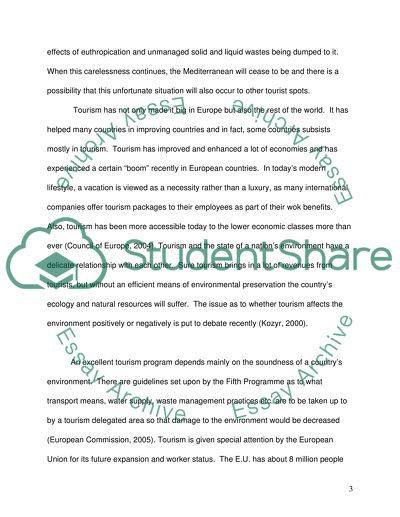Cite this document
(The Negative Effects of Tourism Research Paper Example | Topics and Well Written Essays - 5370 words, n.d.)
The Negative Effects of Tourism Research Paper Example | Topics and Well Written Essays - 5370 words. Retrieved from https://studentshare.org/tourism/1525780-european-tourism-effects-on-the-environment
The Negative Effects of Tourism Research Paper Example | Topics and Well Written Essays - 5370 words. Retrieved from https://studentshare.org/tourism/1525780-european-tourism-effects-on-the-environment
(The Negative Effects of Tourism Research Paper Example | Topics and Well Written Essays - 5370 Words)
The Negative Effects of Tourism Research Paper Example | Topics and Well Written Essays - 5370 Words. https://studentshare.org/tourism/1525780-european-tourism-effects-on-the-environment.
The Negative Effects of Tourism Research Paper Example | Topics and Well Written Essays - 5370 Words. https://studentshare.org/tourism/1525780-european-tourism-effects-on-the-environment.
“The Negative Effects of Tourism Research Paper Example | Topics and Well Written Essays - 5370 Words”, n.d. https://studentshare.org/tourism/1525780-european-tourism-effects-on-the-environment.


